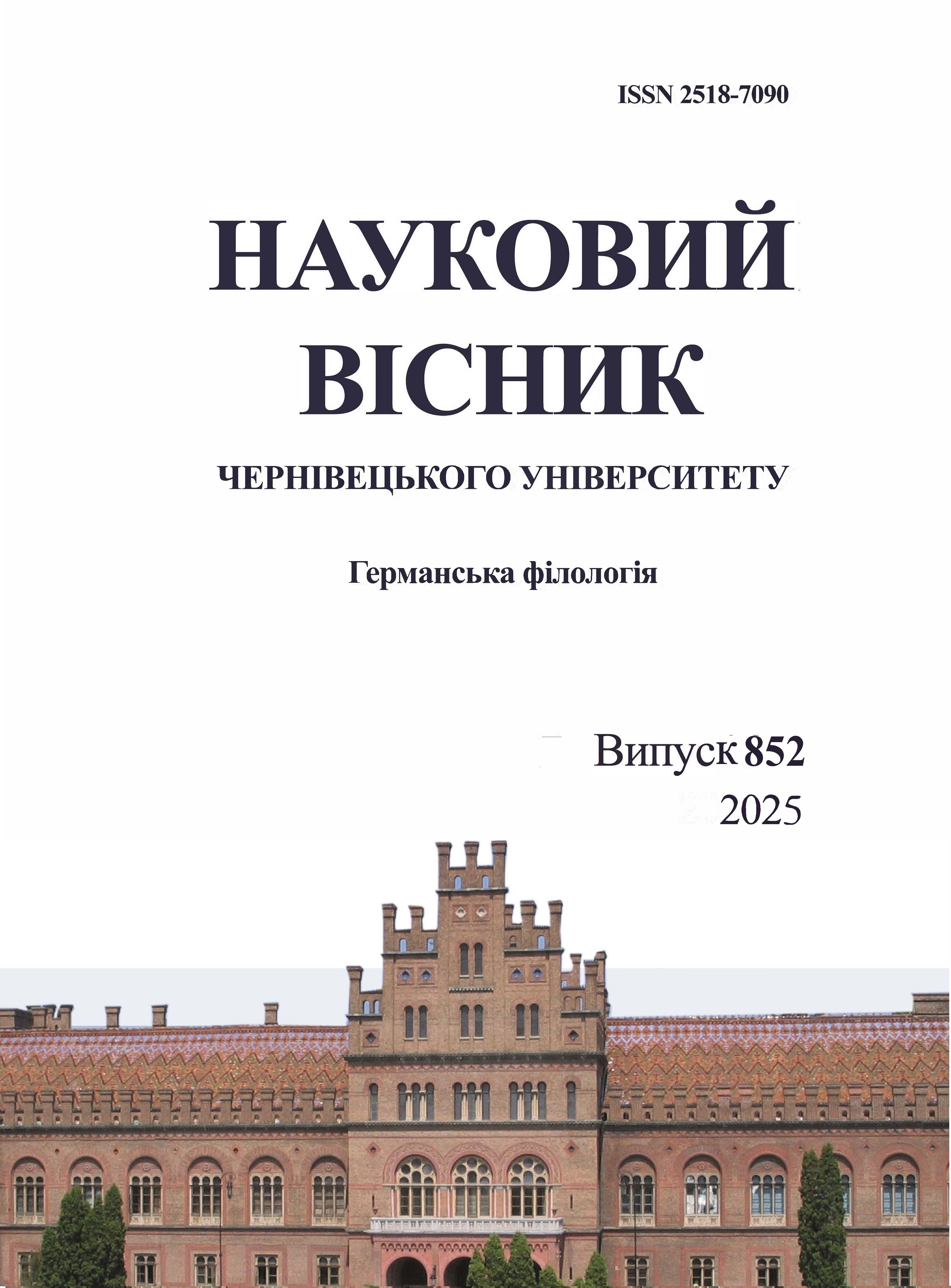LEXICAL AND SEMANTIC ORGANISATION OF GERMAN ACCOUNTING AND AUDITING TERMINOLOGY
DOI:
https://doi.org/10.31861/gph2025.852.87-96Keywords:
thematic group, classification, hyper- hyponymic relations, structural typeAbstract
The article is devoted to streamlining the German accounting and auditing terminology, its classification and unification, which will allow predicting its further development and open up the prospect of studying other terminology systems. The object of the study is the German accounting and auditing terminology. The subject of the study is the thematic organisation of the German accounting and auditing terminology, its hyper- and hyponymic relations.
The research material was 6000 accounting and auditing terms, which were extracted from special scientific and technical literature - textbooks, manuals, periodicals, as well as lexicographical works: translation, explanatory and terminological dictionaries, dictionaries of foreign language words, encyclopaedic editions.
The purpose of the study is to determine the lexical and semantic specificity of the analysed terminology and to describe the thematic groups of accounting and auditing terms in the German language,
Based on semantic characteristics, we divide all the studied German accounting and auditing terms into 10 thematic groups:
1) Names of operations, actions and processes
2) Names of properties, qualities, features and states
3) Names of indicators, values and units of measurement:
4) Names of documents, forms of payment:
5) Names of securities:
6) Names of institutions, establishments and their structural subdivisions:
7) Names of individuals:
8) Names of money, banknotes:
9) Names of economic laws:
10) Names of economic theories, algorithms, models
The systematic nature of the concepts of accounting and audit can be traced in hyper- and hyponymic relations, which group the term units into two structural types: ‘tree-like’, where each subsequent component sequentially “branches” its connections according to a certain common seme, and “herringbone”.
Downloads
References
СПИСОК ЛІТЕРАТУРИ
Габідулліна А.Р., Колесніченко О.Л. Методологія сучасних лінгвістичних досліджень: навчальний посібник. Слов’янськ: Вид-во Б.І. Маторіна, 2019. 322 с.
Ганич Д.І., Олійник І.С. Словник лінгвістичних термінів. К.: Вища школа, 1985. 360 с.
Панько Т.І., Кочан І.М., Мацюк Г.П. Українське термінознавство: [монографія]. Львів: Світ, 1994. 216 с.
Покровська О.А. Німецька термінологія ринкових відносин: дис. ... канд. філол. наук: 10.02.04 «Германські мови». Харків: Харківський держ. ун-т, 2020. 207 с.
Kiyko S., Rubana Ye. Computergestützte Erstellung von zweispra¬chigen Fachwörterbüchern. PNAP: Scientific Journal of Polonia University Periodyk Naukowy Akademii Polonijnej. Poland: Educator, 2022. Vol. 55. Nr. 6. Pp. 25-31.
REFERENCES
Gabidullina A.R., Kolesnichenko O.L. Methodology of modern linguistic research: a textbook. Sloviansk: B.I. Matorin Publishing House, 2019. 322 с.
Hanych D.I., Oliynyk I.S. Dictionary of linguistic terms. K.: Vysha Shkola, 1985. 360 с.
Panko T.I., Kochan I.M., Matsiuk H.P. Ukrainian terminology: [monograph]. Lviv: Svit, 1994. 216 с.
Pokrovska O.A. German terminology of market relations: PhD thesis: 10.02.04 ‘Germanic languages’. Kharkiv: Kharkiv State University, 2020. 207 с.
Kiyko S., Rubana Ye. Computer-aided creation of bilingual specialised dictionaries. PNAP: Scientific Journal of Polonia University Periodyk Naukowy Akademii Polonijnej. Poland: Educator, 2022. Vol. 55. Nr. 6. Pp. 25-31.






